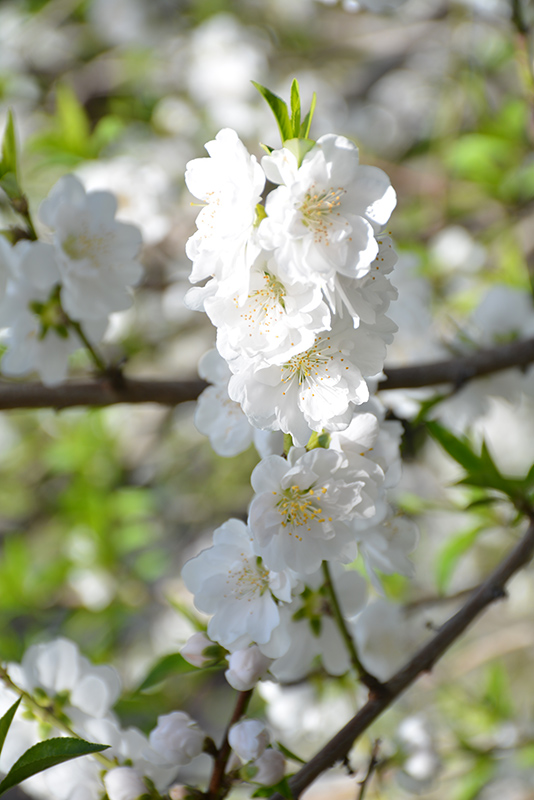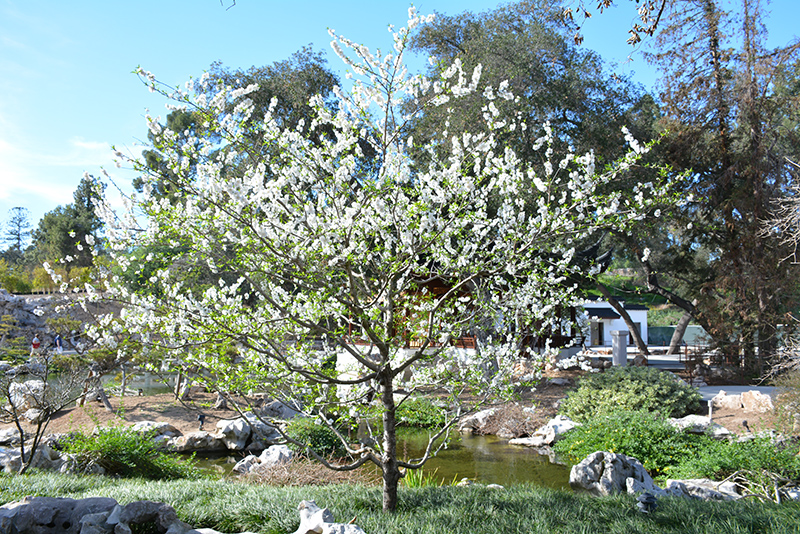>> Home
Early White Ornamental Peach
Prunus persica 'Early White'
Height: 20 feet
Spread: 20 feet
Sunlight:
![]()
![]()
Hardiness Zone: 5
Other Names: Common Peach
Description:
A popular peach that is quite ornamental, with showy white double flowers in early spring and a low, spreading habit; bright green foliage turns yellow in fall; will tolerate some shade but needs full sun most of the time and well-drained soil
Ornamental Features
Early White Ornamental Peach is covered in stunning clusters of fragrant double white flowers along the branches in early spring before the leaves. It has green deciduous foliage which emerges light green in spring. The serrated narrow leaves do not develop any appreciable fall color. However, the fruit can be messy in the landscape and may require occasional clean-up.
Landscape Attributes
Early White Ornamental Peach is a deciduous tree with an upright spreading habit of growth. Its average texture blends into the landscape, but can be balanced by one or two finer or coarser trees or shrubs for an effective composition.
This tree will require occasional maintenance and upkeep, and should only be pruned after flowering to avoid removing any of the current season's flowers. Gardeners should be aware of the following characteristic(s) that may warrant special consideration;
- Messy
- Insects
- Disease
Early White Ornamental Peach is recommended for the following landscape applications;
- Accent
- Shade
Planting & Growing
Early White Ornamental Peach will grow to be about 20 feet tall at maturity, with a spread of 20 feet. It has a low canopy with a typical clearance of 4 feet from the ground, and is suitable for planting under power lines. It grows at a slow rate, and under ideal conditions can be expected to live for 40 years or more.
This tree does best in full sun to partial shade. It does best in average to evenly moist conditions, but will not tolerate standing water. It may require supplemental watering during periods of drought or extended heat. It is not particular as to soil type or pH. It is highly tolerant of urban pollution and will even thrive in inner city environments, and will benefit from being planted in a relatively sheltered location. This is a selected variety of a species not originally from North America.

